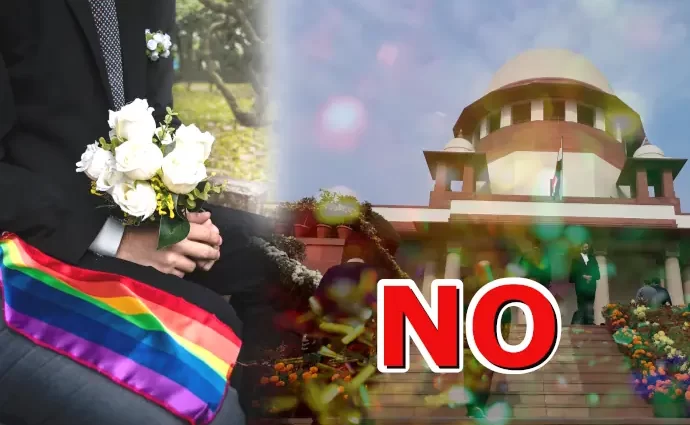The Indian Supreme Court held a long hearing of a plethora of PILs (Public Interest Litigation applications) earlier this year in deciding whether it could recognize the same-sex marriage as legal.
The five judges bench led by the Chief Justice of India Justice DY Chandrachud (with Justices Sanjay Kishan Kaul, S Ravindra Bhat, Hima Kohli and PS Narasimha) reserved its decision on 11 May and kept the world waiting while they took their sweet time to suddenly realize – at a huge legal and monetary cost to the country – that they did not have the authority to do it.
Those who knew the outcome from the outset say it is no rocket science that they have arrived at the conclusion it is for the legislature to enact the law first, before the courts can enforce and uphold it.
No wonder, most media outlets around the world reported it wrong say the apex court “refused” to legalize the same-sex marriage in India.
They do not realise the courts do not create statute law; they can only create case law through enforcement, upholding and interpretation of the statute law.
Coming back to the decision, three judges, S Ravindra Bhat, Hima Kohli and PS Narasimha, of a five-judge Constitution Bench of the Supreme Court, delivering the majority decision, categorically stated there were no provisions in the current laws in India under which the court could recognize the right of same-sex couples to enter into marriages.
“An entitlement to legal recognition of the right to union – akin to marriage or civil union, or conferring legal status upon the parties to the relationship can be only through enacted law. A sequitur of this is that the court cannot enjoin or direct the creation of such regulatory framework resulting in legal status”, said Justice Robin Bhatt, writing the majority judgement.
Central government to set up committee
Based on the submission made the Solicitor General of India to the Supreme Court, the Court has expressed the view Central government should be set up a high-powered committee chaired by the Cabinet Secretary to undertake a comprehensive examination of all relevant factors related to same-sex marriage.
“Consistent with the statement made before this Court during the course of proceedings on 03.05.2023, the Union shall set up a high-powered committee chaired by the Union Cabinet Secretary, to undertake a comprehensive examination of all relevant factors, especially including those outlined above. In the conduct of such exercise, the concerned representatives of all stakeholders, and views of all States and Union Territories shall be taken into account”, Justice Bhatt added.
The high-powered committee shall take into account views of all stakeholders and all states and union territories.
The ball is now in the court of the parliament of India
Queer couples entitled to have such relationships but no legal status
The judgement, however destigmatizes the Queer couples’ unions. It says they have the right to union or relationship be it mental, emotional or sexual, drawing from the right to privacy, the right to choice and the right to autonomy.
In the absence of the enacted law, this does not give them the right to claim legal status or entitlement to the said union.
Special Marriage Act valid
The PILs had also challenged the Special Marriage Act insofar as it does not recognize unions between same-sex couples, is dismissed.
The court said, the law as it stands (the Special Marriage Act 1954) is perfectly valid.
No right to adopt children
The court also made it clear that queer couples do not have right to adopt under the law as it stands today.
The court clarified that Regulation 5(3) of Central Adoption Resource Authority Regulations (CARA Regulations) which bars unmarried persons from adopting, cannot be held to be void. And because the queer couples, even if in a union, do not enjoy the status of being married, cannot jump that hurdle and thus cannot adopt a child.
CJI Chandrachud and Justice Kaul delivered separate dissenting judgments.
More to come.
Similar Posts by The Author:
- This is why Peta Credlin should apologize to Australian Indians
- India and the United States Spearhead Global Disaster Resilience Efforts through CDRI
- A big win for Nurul Khan in his bid to unmask Victorian ‘Labor dirt sheet plotters’
- Australian Muslims call for transparency and accountability of Law Enforcement Action
- Problems of Arvind Kejriwal lie in the Charge-sheet against Manish Sisodia

